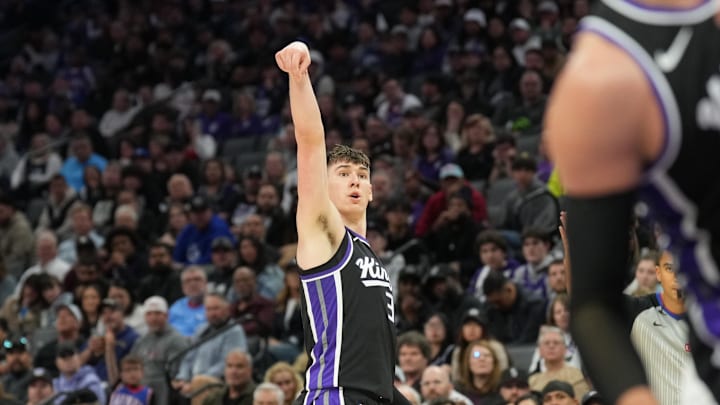With the 2024-25 NBA Season now over for the Sacramento Kings (courtesy of the Dallas Mavericks), the focus has now shifted toward the offseason.
As it stands, the Kings have a handful of players from their 2024-25 roster set to become free agents. Over the next few days, we are going to analyze the pros and cons of bringing back each of these players.
Jake LaRavia was one of the three players the Kings brought in during their busy 2025 Trade Deadline (one that included parting ways with a franchise icon). But did he do enough in his half season stint with the team for the Kings to try and bring him back next season?
Should the Kings bring back Jake LaRavia?
This season marked a career year for the third-year wing (unlike Trey Lyles). In 66 games with the Kings and Memphis Grizzlies, LaRavia averaged 6.9 PPG, 3.9 RPG, 2.4 APG, and 0.9 SPG on 59.1% true shooting in 20.4 minutes of action per night.
For a team lacking direction, LaRavia represents a young building block (23 years old) that can help them now and in the future. His blend of size (6'8) and skill (he can shoot, dribble, and pass) makes him the perfect player for the modern game.
According to my formula, LaRavia had the third-best contract on the team, playing like a 5.8 million dollar player when he was only making 2.4 (despite missing 16 games). So, yes, the Kings should bring LaRavia back. But do they actually have the means to do so?
As John Hollinger did a wonderful job ofhighlighting in a recent article for The Athletic, the Kings are limited in what they can offer LaRavia in free agency this summer. This is because his former employer (the Grizzlies) declined his fourth-year player option.
So, the Grizzlies and the team they traded him to (us) can only offer him roughly 5.2 million dollars next season. Meanwhile, the other 28 teams are not straddled by those restrictions. So, a team that is really high on him could offer him the mid-level exception and swoop him up from under us.
The Kings could offer LaRavia a two-year deal, with the second year being a player option. This gives LaRavia some long-term stability while also giving him some room to be flexible.
If he has a mediocre season next year, he can opt into the second year of his deal and have a guaranteed payday for 2026-27. And if he takes the leap we often see from guys entering their mid-20s, LaRavia can decline that option and enter free agency once more. By that time, the Kings would have full Bird rights and be able to re-sign for any amount.
Will LaRavia be down for this strategy, though? That remains to be seen.
